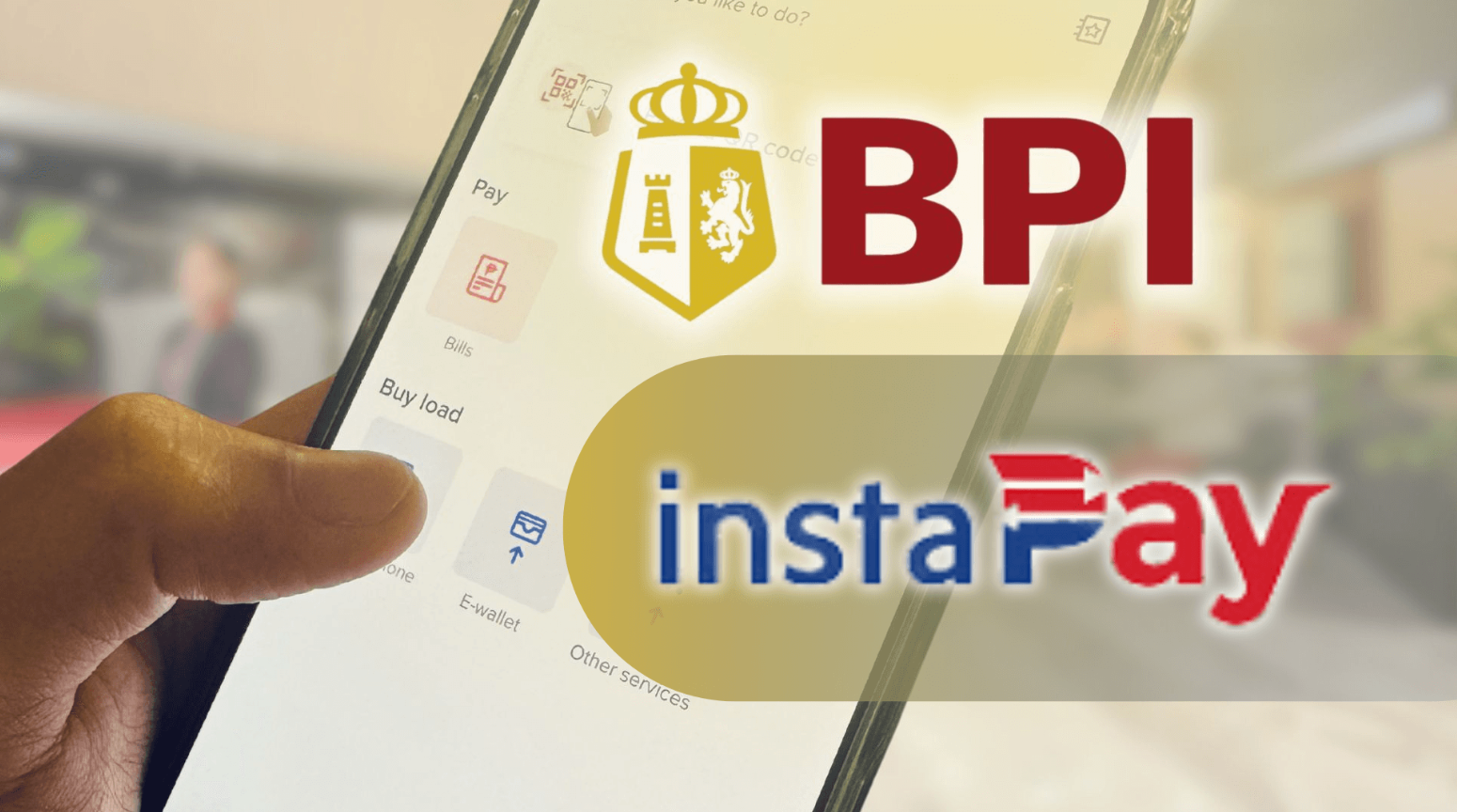By Edielyn Mangol, Reporter
This blog post breaks down everything you need to know about BPI InstaPay fee, BPI InstaPay transfer limits, and BPI cut-off time in 2025 so you don’t have to dig through multiple websites.
When it comes to digital banking, one of the first questions many Filipinos ask is: “How much will I pay when I transfer money?”
If you’re a Bank of the Philippine Islands (BPI) customer, here’s good news — you’ll be happy to know and enjoy BPI Instapay fees to a much lower ₱10 per transaction starting June 2025. This means lower costs whenever you send money across banks or e-wallets.
Why BPI InstaPay fees still matter in 2025

Launched in 2018 under the Bangko Sentral ng Pilipinas’ (BSP) National Retail Payment System, InstaPay has become a cornerstone of cashless transactions. By 2025, it has remained the go-to service for:
- Real-time transfers – Money is credited instantly, 24/7.
- Wide coverage – Works across major banks, neobanks, and e-wallets like GCash and Maya.
- Everyday convenience – Accessible through mobile apps and online banking.
Whether you’re paying a freelancer, sending an allowance to family, or moving money to your GCash or Maya wallet, InstaPay continues to make life easier. And even though many fintech apps have entered the scene, fees still matter.
A difference of ₱10 to ₱15 per transfer may not sound like much, but if you’re making multiple transactions a week, it adds up quickly. That’s why lower BPI Instapay fees is such a welcome change, especially for users who also need clear information on BPI InstaPay transfer limits and availability.
BPI InstaPay fee 2025: Permanently at ₱10
For BPI customers, the question has always been about cost — how much you’ll be charged per transfer. That’s where the good news comes in.
What started as a promo, the lower BPI Instapay fee is now officially permanent.
As of June 1, 2025, BPI has locked in its InstaPay fee at:
- ₱10 per transaction
- Platform: Available via BPI Online and BPI Mobile App
- Coverage: Applies to all retail clients

To put this into perspective:
- Old standard fee: ₱25 per transfer
- New fee: ₱10 per transfer
So, if you send money 10 times a month, that’s ₱100 instead of ₱250 — or ₱150 in savings monthly. Multiply that by a year, and you save ₱1,800 just by paying a lower transfer fee — savings that go hand in hand with knowing your BPI InstaPay transfer limits.
Fee waivers for premium clients

If you’re part of BPI’s higher-tier customer base, you get even better perks:
- InstaPay (₱10 fee) → Waived
- PESONet (₱50 fee) → Waived
BPI Preferred, BPI Gold, and BPI Private Banking clients enjoy waived fees not only for InstaPay but also for PESONet. For high-value clients who transfer regularly, this adds up to significant savings.
For example, a small business owner who makes 20 transactions a month would normally spend ₱200 in fees. With a premium account, that’s completely waived — making BPI more competitive with digital-only banks that often promote zero-fee transfers while also offering clarity on BPI InstaPay transfer limits for larger transactions.
BPI InstaPay transfer limits 2025
Now, knowing how much you can send per day is just as important as knowing the fee. Here’s a quick breakdown:
| Limit Type | Amount | Notes |
|---|---|---|
| Per-transaction limit | ₱50,000 | Applies to each transfer |
| Daily aggregate limit | ₱250,000 (default) | Includes all InstaPay transactions |
| Premium client limit | ₱500,000 | For Preferred, Gold, and Private clients |
👉 Real-life tip:
- For small transfers (₱500–₱1,000), you won’t hit the cap.
- For freelancers and business owners, higher-tier accounts give more flexibility.
These BPI InstaPay transfer limits strike a balance: big enough for most personal users, but still designed with security in mind. For freelancers, entrepreneurs, or anyone moving larger amounts, understanding these limits helps in planning transactions more efficiently.
Cut-off times: InstaPay versus PesoNet
One big advantage of InstaPay is that it’s always available. Unlike PESONet, which has banking-day restrictions, InstaPay runs in real time.
- InstaPay: 24/7, including weekends and holidays. Funds are credited instantly.
- PESONet: Banking days only. Transfers before 4:00 PM are credited same day; later ones post the next banking day.
👉 When to use which?
Use InstaPay for urgent transfers, like paying a supplier who needs funds immediately or sending cash during an emergency. Use PESONet for larger, non-urgent payments, especially if you’re a premium client who enjoys waived fees.
In short, if speed matters, then BPI InstaPay is the best way to go because there is no BPI cut-off time in 2025 — it works anytime, day or night. PESONet, on the other hand, is still tied to traditional banking hours.
How BPI stacks up against other banks (2025)
The BPI InstaPay fees of ₱10 fee isn’t the lowest, but it is competitive compared to the other players:
| Bank / E-Wallet | InstaPay Fee (2025) |
|---|---|
| BPI | ₱10 (permanent) |
| GCash / Maya | ₱15–₱20 |
| UnionBank / GoTyme / CIMB | ₱8–₱15 (varies) |
| Tonik / SeaBank | Sometimes waived |
With the reliability of a traditional big bank, the ₱10 BPI InstaPay fees hits a solid middle ground.
This puts BPI in a strong position: not the absolute cheapest, but a reliable middle ground backed by the trust and security of a traditional bank — and with clearer communication around fees, BPI InstaPay transfer limits, and BPI cut-off time in 2025, customers get the transparency they need.
Tips to save more on InstaPay

- Batch your transfers. Instead of sending multiple small amounts, consolidate into one.
- Monitor daily limits. Schedule bigger payments earlier in the day if nearing your cap.
- Use PESONet for large, non-urgent amounts. Especially if fees are waived for your account type.
- Upgrade if eligible. Higher-tier clients enjoy waived fees and higher transfer limits.
- Take advantage of promos. Some banks and e-wallets occasionally waive fees to attract users — worth watching if you also maintain accounts outside BPI.
Why this matters to everyday users
The reduction from ₱25 to ₱10 may seem small, but it represents more than just savings. It shows that traditional banks are adapting to customer needs and the competition posed by fintech players. By making BPI InstaPay transfer limits and BPI cut-off time 2025 easy to understand, BPI also removes confusion that often frustrates digital banking users.
For Filipinos who regularly send ₱500 – ₱1,000 to family members or pay for services online, every peso counts. Over the course of a year, hundreds — even thousands — of pesos can be saved.
For premium clients, waived fees and higher limits make BPI a practical choice for managing larger sums, whether for business or personal purposes.
Final thoughts
By 2025, BPI has made InstaPay more affordable and predictable with its permanent ₱10 fee.
- For everyday users, it means lower costs without sacrificing speed or convenience.
- For premium clients, waived fees and higher transfer limits make digital banking even more seamless.
Combined with transparent BPI InstaPay transfer limits and no BPI cut-off time 2025, it’s easier than ever for Filipinos to manage their money digitally.

As more Filipinos adopt cashless transactions, the combination of affordable fees, flexible limits, and real-time availability ensures that InstaPay will remain a key part of the country’s financial ecosystem in the years ahead.
Quick recap: BPI InstaPay Fee 2025
- ₱10 per transfer (permanent)
- ₱50,000 per transaction; ₱250,000 daily limit
- 24/7 availability, credited instantly — no BPI cut-off time 2025








